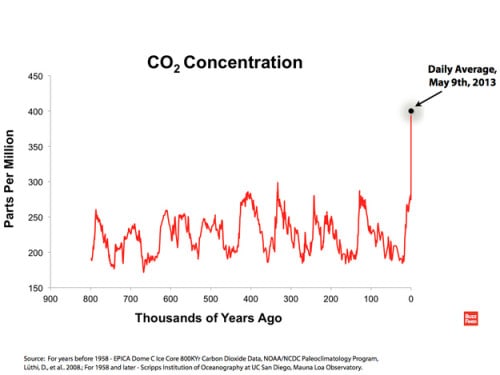According to a recent article, atmospheric concentration of Carbon Dioxide has officially passed 400 parts per million. What does this number mean? Well, it’s the first time that CO2 levels have passed this mark during human existence.
As per the sensors at the National Oceanic and Atmospheric Administration’s Mauna Loa Observatory in Mauna Loa, Hawaii on may 9, 2013, the atmospheric concentration of CO2 level of 400 parts per million has not reached such epic levels since the Pliocene epoch. Just how long ago was that? Try 3.2 and 5 million years ago!
Researchers attribute such an incredible peak in CO2 levels to the burning of fossil fuels. These increases in CO2 levels are in turn leading to climate change.
According to a paper published a number of years ago by NASA and Yale climate scientists, the acceptable levels of CO2 for a healthy planet sit around 350 PPM.
Simply put, if CO2 levels are sustained at such a peak level, it is likely that the planet will suffer irreversible damage.
One Scripps geochemist, Ralph Keeling believes that if change doesn’t take place (and immediately) within a few decades the Earth will hit 450 PPM. What will happen if we do hit 450 PPM? This level of CO2 was last seen some 30 million years ago – a time in which ice was seldom seen on the planet’s face and the oceans of the world sat 200 feet higher than they do today.
 Gearfuse Technology, Science, Culture & More
Gearfuse Technology, Science, Culture & More



